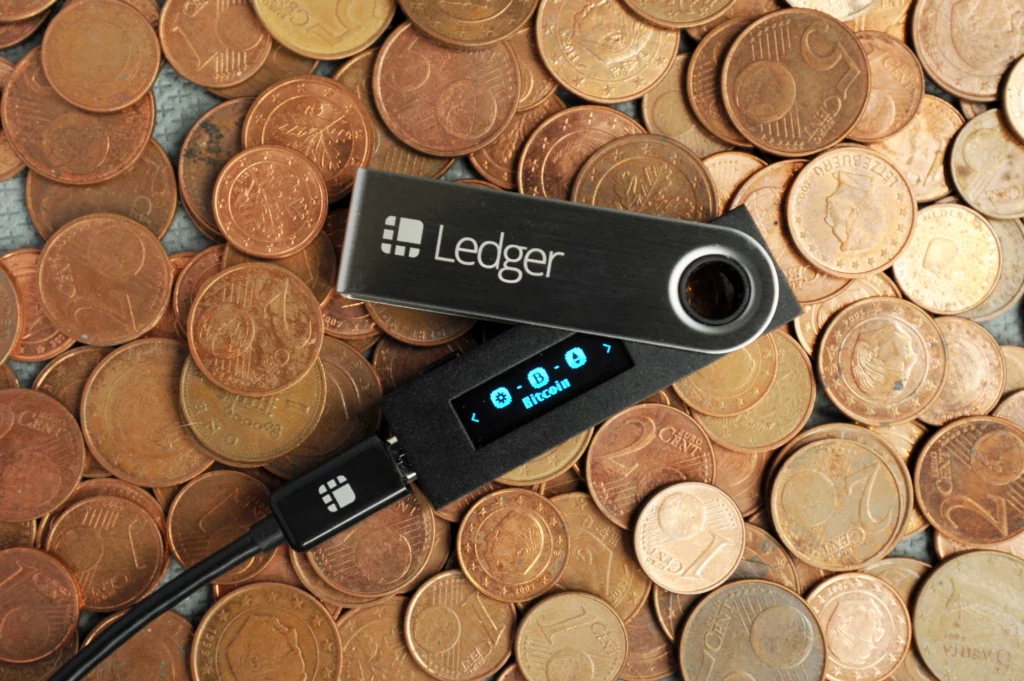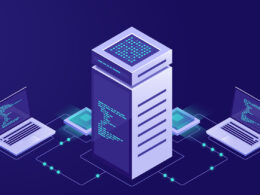Are you looking to develop a crypto wallet? It’s not hard to see why you would be. The combined market capitalisation of nearly 22,000 unique crypto assets, traded through more than 500 exchanges, is around US$1 trillion at present. While more than half of this market belongs to two of the most well-known digital assets of contemporary times – Bitcoin and Ether – the long tail contains a host of high-potential and sometimes acutely project-specific crypto assets.
The seamless trade in the market – however – can only be possible if traders, investors, and new entrant enthusiasts have a proper solution to buy, store, and hold these assets in a way that is safe and adequately secure. Crypto wallets make that possible.
But before delving deeper into how to develop a crypto wallet, let’s look at its genesis briefly.
What is a Crypto Wallet?

At its core, a crypto wallet could be a device or an application to help store crypto assets safely. When you choose a hardware device wallet, it resembles a USB stick.
Similar to a physical wallet that we use to keep our paper currencies or debit/credit cards safe, a crypto wallet allows sending, receiving, and spending the crypto assets as and when required. Passwords – protecting access to a crypto wallet – are known as private keys. However, apart from software and hardware wallets, crypto wallets could also be paper, including the keys and QR codes for mobile devices to scan.
How to Develop a Crypto Wallet

As applicable to the world of development per se, be it a program, application, software or hardware, it is crucial to understand how things work in the decentralised blockchain world before jumping into creating solutions. As such, one must explore the availability of options well before zeroing in on one particular option among them.
Hot and Cold Wallets
Simply put, cold wallets are hardware wallets, while hot wallets are software-based. Each of these categories has its pros and cons.
Since hardware wallets or cold wallets are mostly offline and are connected to the internet only when it is to be used for trade, many users see them as the best option for protecting their assets from fraudulent and malicious actors in the cyber world. On the other hand, a software wallet scores high on the aspect of user convenience.
So, depending on the device or platform you need to use a crypto wallet, the available types could be desktop wallets, mobile wallets or web wallets.
Use APIs
When it comes to building feature-rich crypto wallets, the use of APIs is the best possible way one can leverage.
API stands for Application Programming Interface. APIs are definitions and protocols that help build and integrate application software and let the solution become a part of the larger ecosystem by allowing them to communicate with other non-native products and services thoroughly. At a functional level, APIs help expedite the process of app development.
While many API solution providers are available in the market, RockX Access Node API is one of the most prominent solutions for multi-chain development support. Since it supports most of the leading providers on the mainnet and testnet, developers can focus on building robust applications without worrying about the notion of on-chain access.
On mainnet, the partner/collaborator list of RockX includes Binance, Polkadot, Solana, Ethereum, Cardano, Heco, Avalanche, Elrond, and many more. For development on the testnet, RockX has partnered with Cronos and Ethereum.
The benefits of developing with the RockX API are many. The access node portal of RockX API makes it easy to subscribe, manage, and leverage all possible API keys with a few clicks. Any developer can interact with major PoS blockchains in an instant without being concerned about points of failure. The hybrid cloud architecture and backup nodes ensure hassle-free operations, while the round-the-clock monitoring and recovery system sees that nodes are always online.
Moreover, RockX API has secure access control, preventing DDoS attacks and hacks. It keeps updating and upgrading the protection mechanism with the latest fixes and features regularly.
Deciding on Features
APIs help make the wallet feature-rich. However, the developer needs to ensure that it does not become feature-heavy. The features of a crypto wallet could be many. One has to decide cautiously and judiciously. Some of the must-have features, which would help the wallet to reach out to a large number of users and address a multitude of use cases, could be the following.
A good crypto wallet should allow multiple transaction methods, including NFC, QR Codes, or Bitcoin URLs. They should be allowing instant or – at least – high-speed conversions between fiat currencies and crypto assets. Payments should be trackable in real time. It would be even better if it allowed prioritizing highly used wallet addresses to help process transactions faster and an exclusive QR code scanner facility.
Ensuring utmost security, the wallet must have automatic session logout features, provisions for auto-denial of duplicate payments, and a foolproof password and PIN protection mechanism.
Once the primary set of features is accommodated in a wallet, developers may go for additional ones to inject an adequate competitive edge into their solutions. The wallet might have a real-time push notification mechanism, inflation and economic downturn safeguards, the listing of real-time prices of crypto assets and unrestricted access to transaction history for better ascertaining the expenditure pattern.
Use Open-Source Code for Implementation

Finally, when it comes to implementation on the mainnet, using open-source code solutions is the most efficient way. It is also an apt approach for the decentralized world as most crypto assets are open-source, and one can adequately leverage free libraries and tools already out in the open.
GitHub is one of the most prominent solutions in this regard. It comes with two interconnected principles of Version Control and Git, helping developers track and manage changes to the code and then store it efficiently.
The feature of Version Control in GitHub helps developers track and manage changes to a software project’s code as the project keeps growing.
The distributed version control system, known as Git, helps make the entire codebase and history on the developer’s system available, ready for easy recall and branching and merging whenever necessary.
To make it sufficiently convenient for the developer, GitHub is a website and cloud-based service.
Designing a User-Friendly and Marketable Interface

While making it user-optimized, developers must not forget the aspect of usability. The design and logical flow of the application should be intuitive and rational. However, aspects like user authorization should not be compromised for the sake of making it user-friendly.
Two-factor authentication or multi-factor authentication is essential. Users feel confident with such arrangements even if they might make the signing process a bit longer than usual.
Marketability, however, is not about making claims. It is more about bringing the crucial aspects to the fore and highlighting the benefits and usefulness of the services. Allowing users to gain live experience through demonstrative use cases helps.
Crypto wallets form the backbone of the decentralised economy. One market research estimate believes that the number of crypto wallet users increased to more than 84 million globally in August 2022 from a little more than 76 million in August 2021.
Growth at such a high pace asks for robust and efficient development mechanisms. Innovations are on, and one could expect more and more positive advances in the area in the days to come. If you are looking to develop a crypto wallet, now is as good a time as any to get started.









